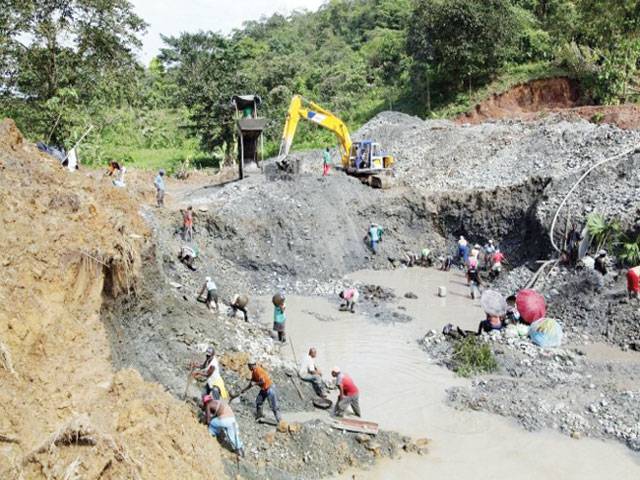BOGOTA-Colombia’s widespread illegal mining is blamed for causing environmental damage and holding workers in slave-like conditions - and now is also being blamed for a malaria outbreak. Critics point to stagnant water buildups at the clandestine sites and poor sanitary conditions at the workers’ camps for an increase in mosquitos spreading the disease, which has quadrupled in jungle regions of the hard-hit and impoverished western department of Choco. ‘The country had more or less controlled its malaria problem the death rate had dropped significantly,’ Health Minister Alejandro Gaviria said this week. ‘But because of illegal mining... we’ve had hotspots since last year and especially this year.’ Speaking on RCN radio, Gaviria said that malaria was especially on the rise in Choco - which stretches from the border with Panama along a stretch of Colombia’s Pacific coastline - as well as the Bajo Cauca area to the east. The National Health Institute counted 18,524 malaria cases and about 300 cases of the disease’s more severe strain. A year earlier, only 4,740 cases of malaria were recorded. Outbreaks of malaria due to clandestine mining however is not new.
‘Population displacement linked to the exploitation of gold mines (and resulting deforestation) has previously created isolated epidemics of malaria’ in Latin America, the Health Institute said.
Mining is a major source of revenue for Colombia. In 2012, the last year for which official figures are available, legal mining accounted for 2.3 percent of GDP, or $8.5 billion. But authorities say that more than half of Colombia’s mining sites are in fact illegal.
In these illegal mines, which help finance illegal armed groups, ‘excavators dig huge holes where water accumulates, perfect breeding groups for malaria-carrying mosquitoes,’ said University of Antioquia researcher Ivan Dario Velez.
And the sites where the miners set up camp ‘usually lack public utilities and have very poor hygiene conditions, which encourages the spread of mosquito and thus the disease,’ he said. Malaria symptoms include feverish headaches, chills, fatigue, nausea and vomiting.
Last year, some 214 million people suffered from malaria, of which 438,000 died from the disease, according the World Health Organization. Most of those who died were children under five, the vast majority of them in Africa. The malaria death rate has dropped 72 percent in South America since 2000, and the WHO expects to eradicate the disease in eight Latin American countries by 2020.
The outbreak in Choco is also linked to a shortage of medicine to fight the disease, according to the health minister. Gaviria said about 7,000 doses of needed medicine are being sent to the department, the poorest in the country. From 2015 to 2016, about 30 people died of malaria, most in isolated communities far from urban centers, according to the Office of the Ombudsman, which that warned this week of a ‘worrisome increase’ in cases.
Separately, in February officials launched an investigation into the deaths of 37 children and the poisoning of 64 others in the Choco region. The victims suffered from symptoms said to be linked to mercury, which is commonly used in illegal mining.






